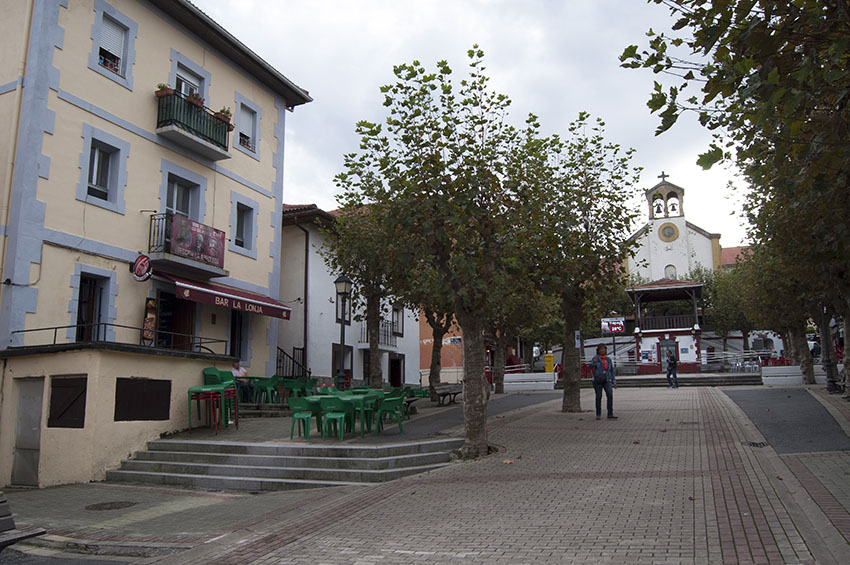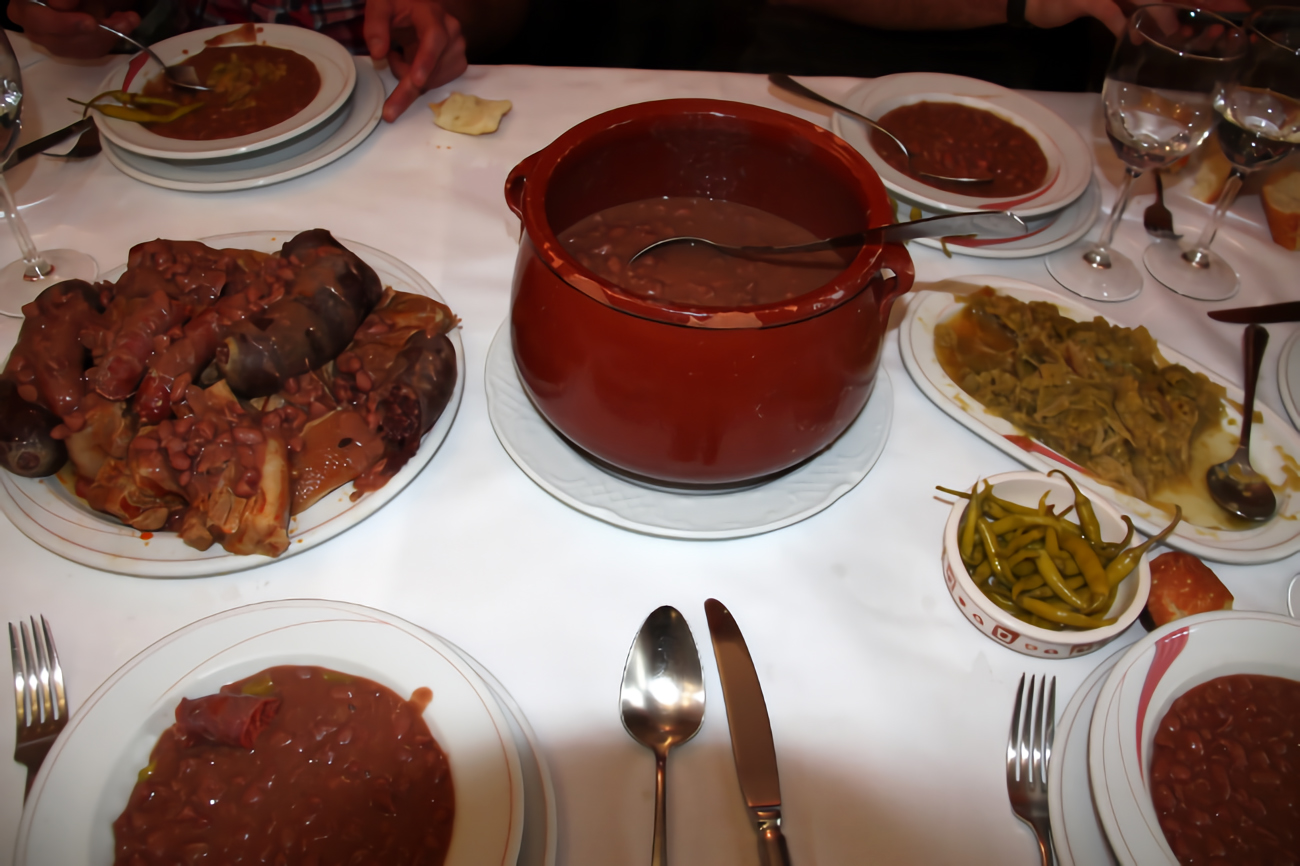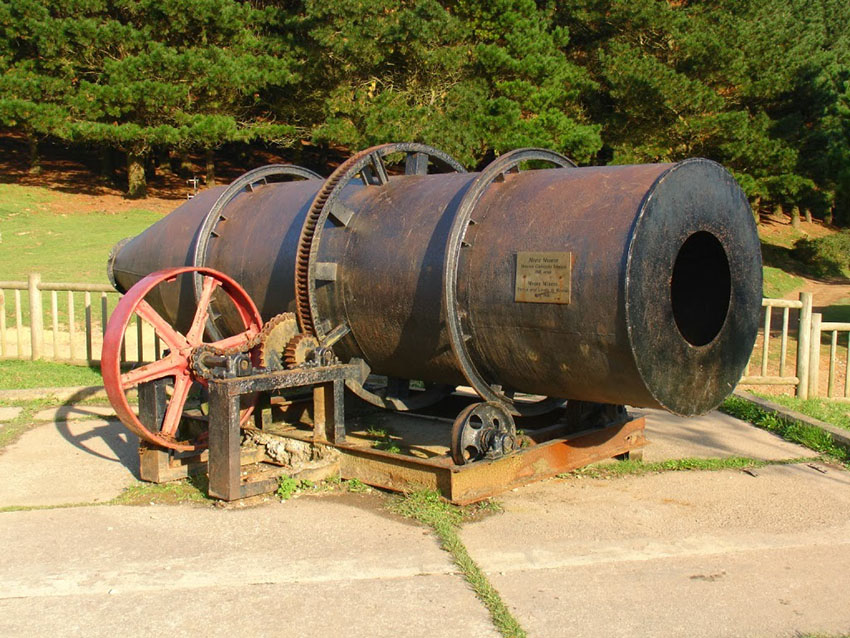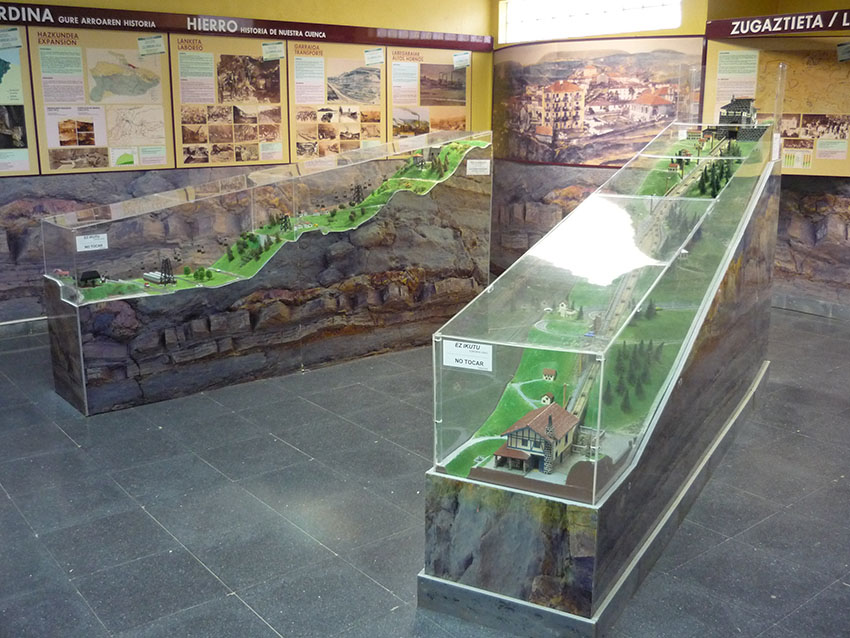Step 2_ LA ARBOLEDA - ZUGAZTIETA
 Route 1.3 km
Route 1.3 km
From Larreineta to La Arboleda there is a 1 km walk past fields and what are now lakes, which have formed as a result of the rising water level in the old open cast mines. They had curious names such as "Matamoros", "Las Cármenes", "El Negro", "Elvira", "La Parcocha", "Los Alemanes", "La Mamen", "Cantera Macho" and "El Ostión".
This last one occupied the large space to the left of the road (2). A remarkable environmental job has been made of recovering the shattered landscape, and you can see the remains of the old mines as part of an illustrative, enjoyable walk through newly replanted trees and grass that now carpet the faces of the mine.
It is a beautiful, harmonious combination of the mother rock, bared by mining, and the trees and shrubs that cling to the rocks with their roots.
In short, this is a cultural landscape which combines the remains of countless mining infrastructures embedded in a landscape of great environmental quality and biodiversity that is absolutely unique in the Basque Country.
In this area there were hundreds of mines (292 in 1890) of all sizes, the most important of which were initially set up as joint ventures between local and foreign entrepreneurs: "The Orconera Iron Ore Cº Ltd.", "The Bilbao River and Cantabrian Railway Cº Ltd.", "Luchana Mining Cº Ltd.", "Société Franco-Belge des mines de Somorrostro", "J.B. Rochelt", until it became known as "The California of Iron".
By the 1950s, the veins were nearly mined out; in 1963 the export of iron ore stopped, and the last mine in this area closed in 1986.
La Arboleda (3) was founded in 1877 to house the workers right next to the mines. They came from every corner of the Iberian Peninsula and lived in conditions that, even today, can be seen here in its houses, streets and landscape. It is the most representative display of mining life and, in its heyday became known by the nickname "El Dorado".
They were hard years, in which men, women and children worked in extreme conditions, living in overcrowded huts or tiny houses, and disease and death were the order of the day; in fact, at one point, life expectancy was only 20.
The poor quality of life and unfavourable working conditions led to the creation and development of trade unions and anarchist, socialist and communist politics together with movements with Catholic roots, turning it into the cradle of the workers’ rights movement in Bizkaia.
Jacques Valdour described La Arboleda as "a village of small dirty, black houses, built hastily out of wood or brick or mud so light that sometimes the northern facade is protected with timber. Dirty alleys separate meagre, uncomfortable, dark and poorly maintained accommodation"
It was in La Arboleda that the first workers' strikes started; they struck great fear into the Bilbao bourgeoisie and became long and bloody. The place is more reminiscent of a Welsh mining village than traditional towns of the area. You can still see houses with wooden walls which replaced huts full of bunk beds lit with carbide lamps where miners slept in a "warm bed" shift system.
In fact, the disappearance of the huts was one of the main demands of the workers in the great strikes of 1890 and 1903. By 1911 most of the buildings were already stone, forming a motley neighbourhood where about 3,000 people lived. In 1913 the Catholic trade unionist Jacques Valdour described La Arboleda as "a village of small dirty, black houses, built hastily out of wood or brick or mud so light that sometimes the northern facade is protected with timber. Dirty alleys separate meagre, uncomfortable, dark and poorly maintained accommodation".
Later, amenities were added that made this a settled place to live, including a hospital, schools, an asylum-hospice, a company store, a circle of Catholic workers, a "casa del pueblo" (social club of the socialists), a Civil Guard barracks, a cinema and the parish church dedicated to San Salvador.
The urban fabric started creating a grid pattern of streets around a central square. This square brought order to the village and was where such amenities as the parish church, the bandstand and the headquarters of the unions would be located.
La Arboleda is a must for anyone interested in gastronomy because of its restaurants, where the "alubiada" bean stew is the speciality of the area. Even with this attraction, today there are only about 16 restaurants out of the 24 bars there were in its heyday.
From here you can extend your excursion by walking above the village to the Peñas Negras interpretation centre (about 2 km away), where you will find both mining remains and explanations of the natural surroundings. If you do not have enough time, we recommend that you keep to the proposed route.
This is a walk that leads us to Gallarta along a new road. In 6 km, we can see remains of the aerial tramways, digging machines, ventilation shafts for the mine galleries, huts and kilns.





































